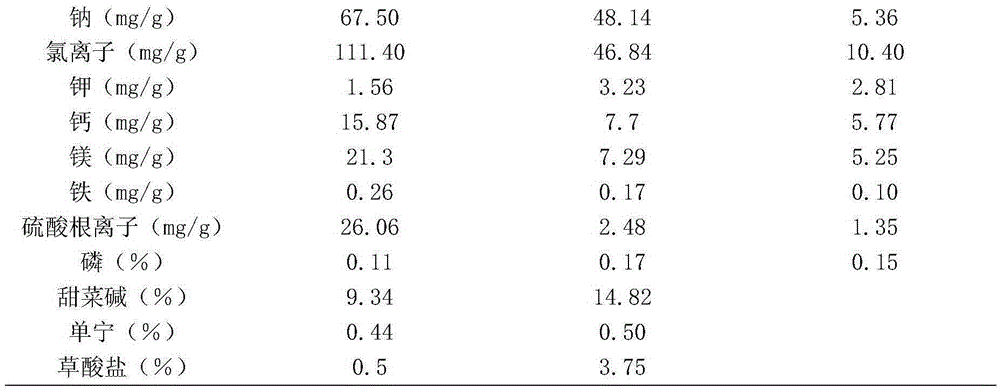Method for blending and preparation of silage by using halophyte
A halophyte and mixed silage technology, which is applied to the preservation method of animal feed raw materials, animal feed, animal feed, etc., can solve the problems of easy loss, unfavorable animal health, poor palatability and nutritional value, etc.
- Summary
- Abstract
- Description
- Claims
- Application Information
AI Technical Summary
Problems solved by technology
Method used
Image
Examples
Embodiment 1
[0024] In 2014, a silage experiment was carried out on the artificially planted halophyte Suaeda salsa and the salt-tolerant plant sorghum on the saline-alkali land in Xiaoguai Township, Karamay. Bud, earing of forage sorghum;
[0025] Prepare the broth:
[0026] a. In the first ten days of August, prepare silage fermentation liquid two days before preparing silage, harvest the fresh and tender stems and leaves of Suaeda salsa and forage sorghum to be ensilaged, cut them to 1-2 cm, and add water twice the weight of the plants Finally, squeeze the juice with a juicer, filter to obtain the filtrate, add glucose with a mass of 2% of the filtrate, adjust the pH value to 4.2 with vinegar, put it into a plastic bottle and seal it, and ferment for 48 hours at a temperature of 30°C in the dark;
[0027] Harvest silage raw materials and mix:
[0028] b. Around mid-August, during the period from budding to early flowering of the halophyte Suaeda salsa, choose fine weather to harvest t...
Embodiment 2
[0034] In 2015, a silage experiment was carried out on the saline-alkali land of the Karamay Agricultural Comprehensive Development Zone on the artificially planted halophyte elm spinach and forage sorghum; the sowing time was early May, the first flowering of elm spinach in early August, and the earing of forage sorghum;
[0035] Prepare the broth:
[0036] a. In the first ten days of August, prepare the silage fermentation liquid two days before preparing the silage, harvest the fresh and tender stems and leaves of the plants to be silaged, the wild elm spinach and the forage sorghum, cut them to 1-2 cm, and add water twice the weight of the plants Squeeze the juice with a juicer, filter to obtain the filtrate, add glucose with a mass of 2% of the filtrate, adjust the pH value to 4.2 with vinegar, put it into a plastic bottle and seal it, and ferment for 48 hours at a temperature of 30°C in the dark;
[0037] Harvest silage raw materials and mix:
[0038] b. Around mid-Augu...
PUM
 Login to View More
Login to View More Abstract
Description
Claims
Application Information
 Login to View More
Login to View More - R&D
- Intellectual Property
- Life Sciences
- Materials
- Tech Scout
- Unparalleled Data Quality
- Higher Quality Content
- 60% Fewer Hallucinations
Browse by: Latest US Patents, China's latest patents, Technical Efficacy Thesaurus, Application Domain, Technology Topic, Popular Technical Reports.
© 2025 PatSnap. All rights reserved.Legal|Privacy policy|Modern Slavery Act Transparency Statement|Sitemap|About US| Contact US: help@patsnap.com



